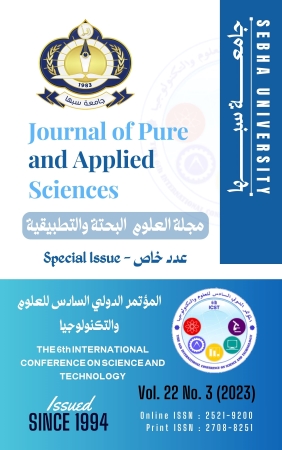The possibility of using autoclaved aerated concrete in buildings in hot environments (case of study is Sebha city)
Abstract
Building technology is accelerating globally in introducing new materials and theories in a world that seeks to achieve more sustainability in the same field, while preserving the functional goals and making the best use of buildings and achieving the comfort of users, and by looking at the hot desert climatic reality experienced by the people living in the south of Libya, systems and materials construction used in it. It was necessary to search for alternative building materials for those currently used to face the thermal differences that vary between a temperature of "44.2º in summer & 2.29º in winter" in order to achieve the concept of thermal comfort in residential buildings and other buildings .Accordingly, through the in-depth study of the researchers in the properties of the autoclaved concrete material "autoclaved aerated concrete or AAC" and its application globally and regionally in climates similar to the city of Sebha, and the use of the descriptive and analytical approach to research. The results of the study showed that the AAC reduced the value of the external heat transfer coefficient from 1.93 W/m²k for the cement block wall to 0.58 W/m²k, and reduced by 23.25% the number of unfulfilled cooling hours with the same thickness for the same void. The study also concluded that it is possible The use of this material in the future in the construction of buildings in Libya, especially in the southern region.
Authors
Copyright (c) 2023 Journal of Pure & Applied Sciences

This work is licensed under a Creative Commons Attribution 4.0 International License.
In a brief statement, the rights relate to the publication and distribution of research published in the journal of the University of Sebha where authors who have published their articles in the journal of the university of Sebha should how they can use or distribute their articles. They reserve all their rights to the published works, such as (but not limited to) the following rights:
- Copyright and other property rights related to the article, such as patent rights.
- Research published in the journal of the University of Sebha and used in its future works, including lectures and books, the right to reproduce articles for their own purposes, and the right to self-archive their articles.
- The right to enter a separate article, or for a non-exclusive distribution of their article with an acknowledgment of its initial publication in the journal of Sebha University.
Privacy Statement The names and e-mail addresses entered on the Sabha University Journal site will be used for the aforementioned purposes only and for which they were used.





